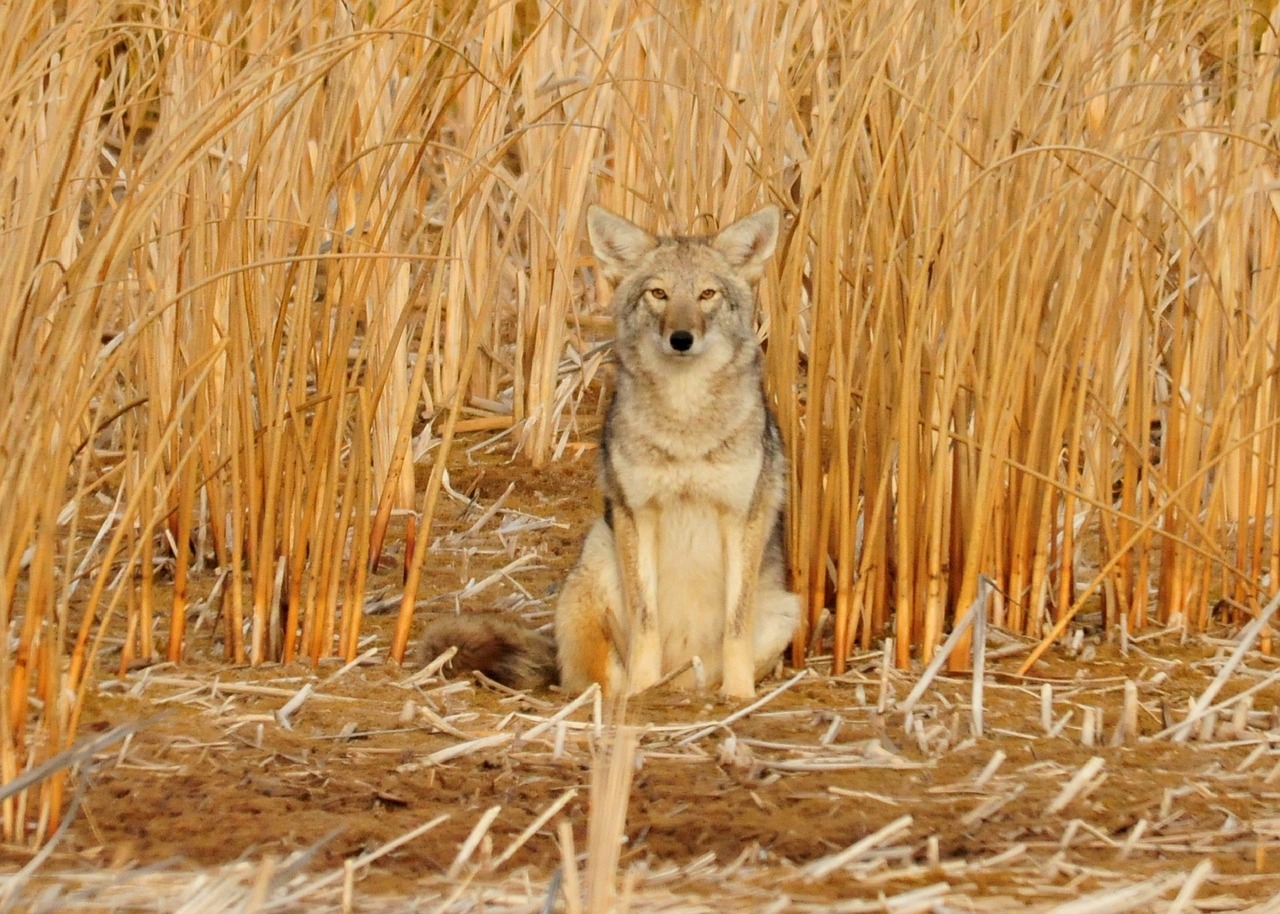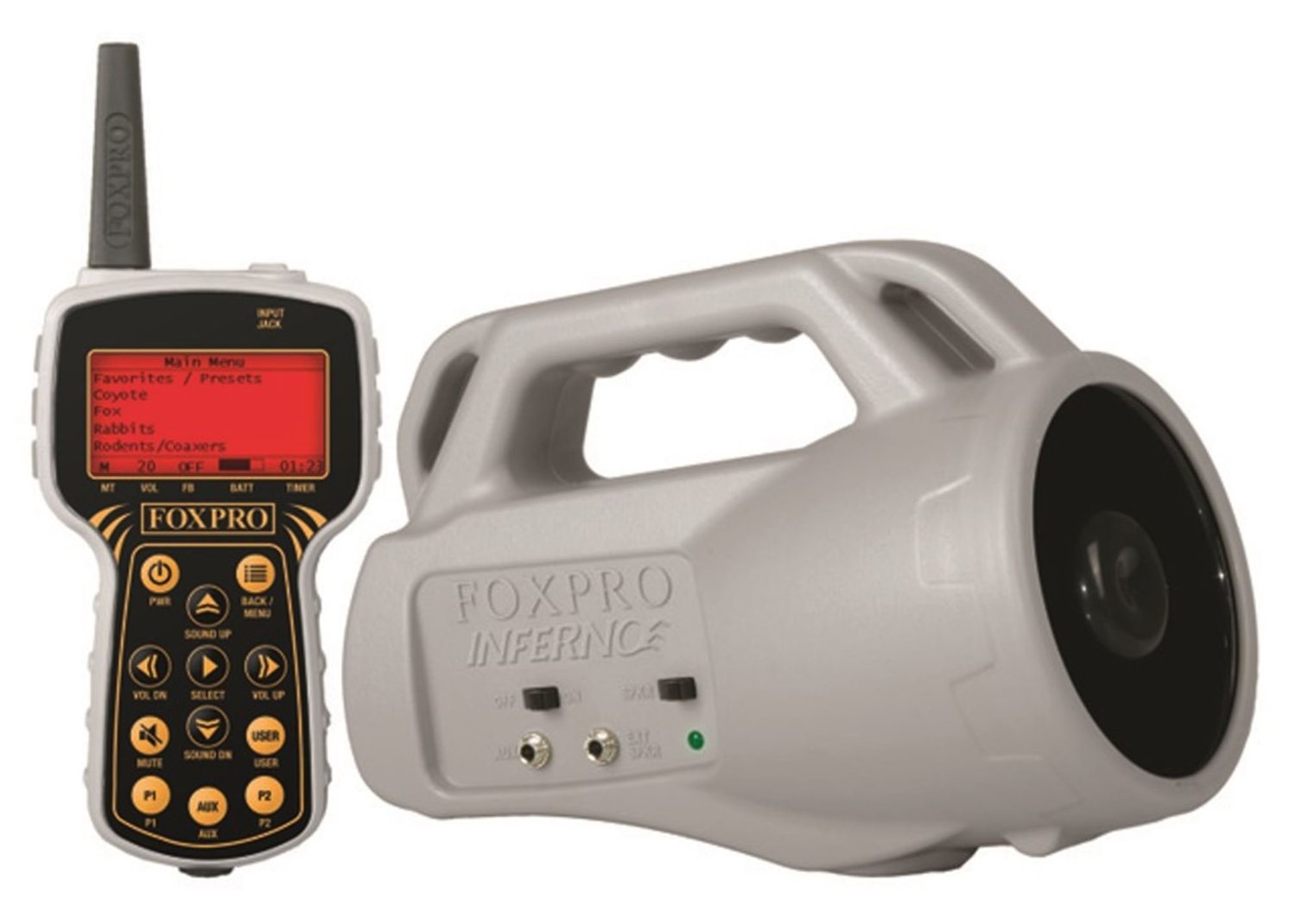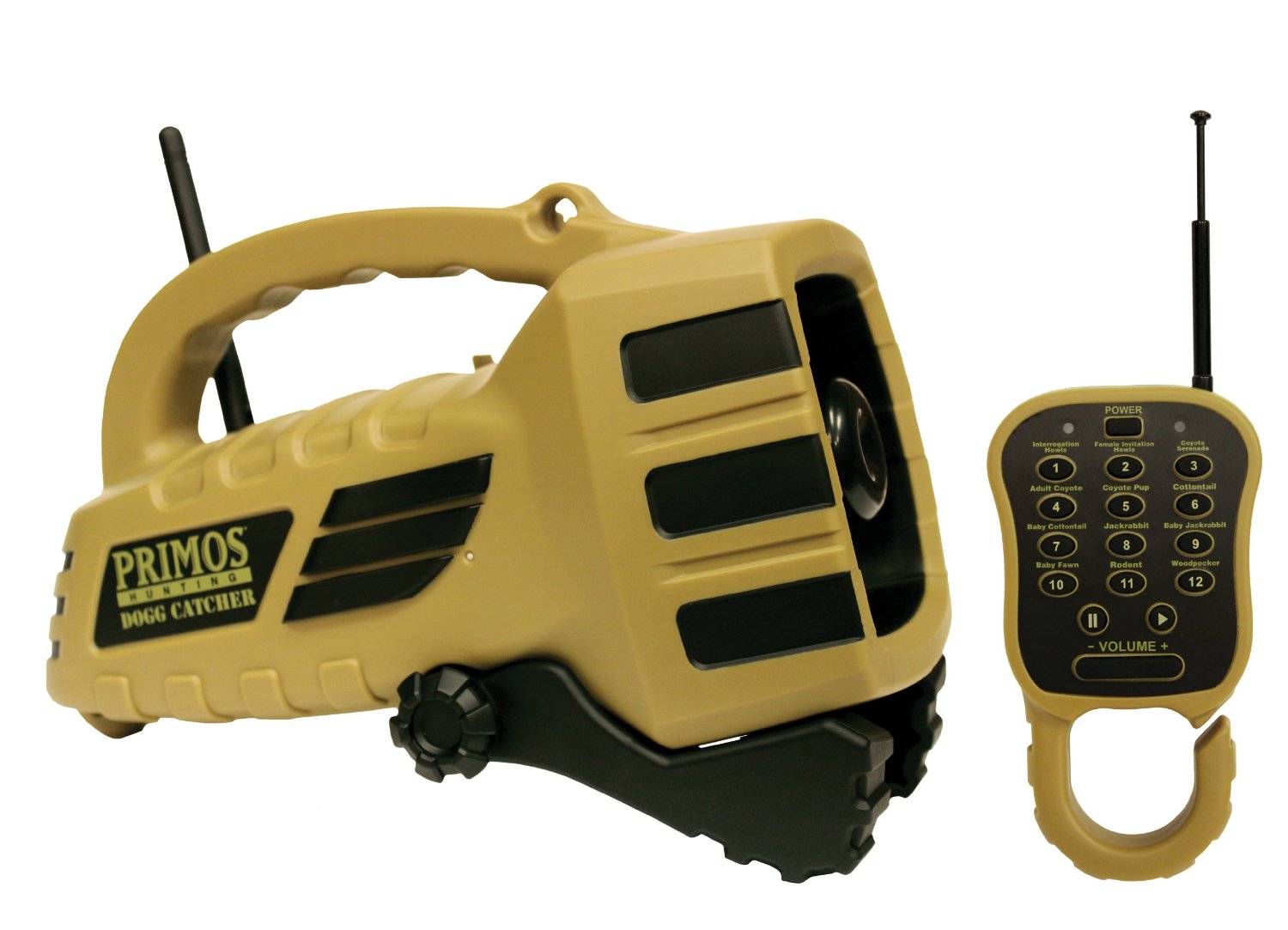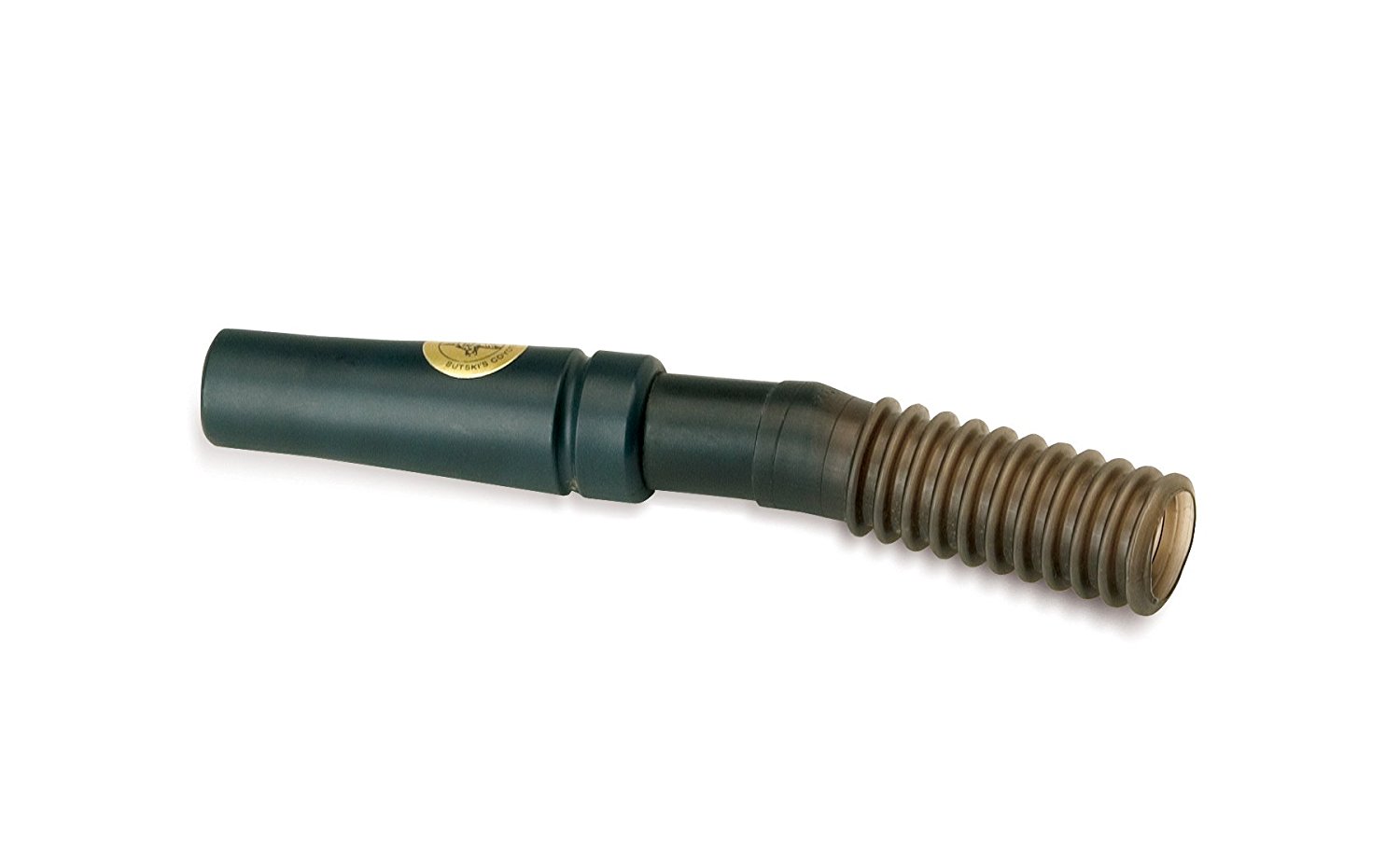Hunting coyotes can be a difficult task depending on your hunting ground. If you’re hunting coyotes in a big, open field that’s relatively quiet, you shouldn’t have too much problem shooting one. However, if you’re hunting from a wooded area that has seen a decent amount of hunting action, drawing out a coyote can be a difficult task.
Coyotes are clever animals that can sense danger, catching on quickly to nearby hunters. Because of this, you will have a hard time attracting coyotes in areas that have been overhunted. They are, by nature, skittish animals that are more likely to stay hidden than run after an easy meal. Fortunately, however, adding a coyote call to your toolbox is a good way to attract nearby howlers. To start off with here is a quick look at the 4 of the best coyote calls on offer today:
Call | Type | Price |
|---|---|---|
Electronic | ||
Electronic | ||
Mouth | ||
Mouth |
Looking for the Right Call
Like everything in the hunting world, there is fierce debate over what makes the best coyote call on the market. Needless to say, very few people are in agreement, and a lot of picking the right call comes down to style and personal preference. Fortunately, there are a variety of coyote calls on the market, so finding the right one for you shouldn’t be difficult.
There are two types of coyote calls available on the market: electronic and manual calls. You’ll find that manual calls, or mouth calls, are popular among the purists – the traditional hunters who insist on doing things the way their parents did before them. So, it shouldn’t come as a surprise that hunters who prefer using the coyote hand call look down on electronic calls, which they generally refer to as cheating.
Skill or Functionality?
There’s no denying that the traditional hand call takes a great deal of skill to use. Because of this, you need to first determine how important skill and functionality are to you. Do you want to learn the art of coyote calling, or do you want a functional call that can do everything you need?
A number of technical advancements have been made in the area of electronic coyote calls. You can choose from a variety of different sounds, like howls, distress calls, and even yelps. You can even queue up various sounds, ensuring that your call makes your preferred sequence of noises.
Be Smart When Calling for Coyotes

Hunters tend to rely on a variety of calls to attract nearby coyotes. Along with coyote sounds, these types of calls can also be general animal sounds like rabbits, squirrels, and birds. The purpose of these sounds is to attract coyotes that are looking for an easy meal.
Unfortunately, coyotes are extremely smart animals. It won’t take long for a pack of them to notice that coyotes are dying when they follow those sounds. This is why it’s important to cycle randomly through different types of animal sounds. If you play the same sound constantly, you will have very little success drawing out a hungry coyote.
One of the biggest benefits that electronic coyote calls have over manual calls is the sound variations. If you’re hunting with hand calls and you want to use different animal sounds to draw out a coyote, you will need to carry different types of calls on your person at all times. With the electronic call, however, you can access all of these sounds on one simple device.
Tips for Effective Coyote Calling
Remember, coyotes got their reputation for being cunning for a reason – they catch on very quickly when something’s not right. Make sure that you keep coyotes guessing on their toes by randomizing your vocalizations. Don’t stick to any specific pattern, and never use only distress calls.
Think of your calling sounds as an imaginary tackle box. When you go fishing, you typically don’t go with only one type of lure. A good fisherman goes with a lure for almost any situation. Coyote hunting is no different in this regard. Your goal is not only to be unpredictable, but to trick nearby coyotes into thinking that your calls are coming from multiple howlers.
When attracting coyotes, don’t try to complicate things by being overly complex. Coyotes generally have between 10 to 13 sounds that they use to communicate with each other. Explore all of these sounds and create a way to mix them up. Alternate between loud howls for distance and whines or yelps for nearby. Remember to always be alert when howling, as coyotes tend to investigate the source of howls.
Three Types of Calls to Use
Here are some different types of sounds that you can use on your hunt:
1. Prey in Distress
This is a common feature on most electronic callers. Coyotes have an insatiable appetite and will jump at the opportunity to eat an injured animal. Consider adding the sound of fawns, foxes, and even cat to draw them out.
2. Yelps
Play to the animal’s instincts by using the sound of yelping puppies. This type of call is especially useful in the spring when coyotes stick together in a tightly-knit group. Consider using this type of call two or three times in a row, slightly increasing the volume with each call.
3. A Threatening Howl
If you are certain that you’re hunting in a pack’s territory, sending out a challenging can be an excellent way to lure out aggressive coyotes. If you frequently hunt in the same area, you can try to listen to where coyote howls are coming from to determine where their den is. Most coyotes congregate to the most secluded areas in the area.
Need Help Choosing the Best Electronic Coyote Call?
When looking for a top-notch electronic coyote call, make sure that you find one that is sturdy, loud, and easy to program. If you’re looking for an excellent electronic call for April and other months in the hunting season, consider one of these popular models:
The FOXPro Inferno

When it comes to electronic devices, many hunters regard this to be the best coyote call for the money. The Inferno costs less than $200 and comes programmed with 75 different animal calls, meaning that you never have to worry about cycling through a mixture of sounds to lure nearby coyotes.
The Inferno is significantly cheaper than other upper-range models, but is known for its loud, crisp sound that bellows across the hunting grounds. At a net weight of eight ounces, this call is also lightweight and easy to transport.
The Inferno also comes with an LED remote that is easy to use. This allows you to set the call in a location for sound, while you hide quietly in a location with excellent visibility. If you’re looking for a mid-range coyote call with a high-quality feel, this is the perfect electronic device for you.
The Primos Dogg Catcher

The Dogg Catcher is a budget electronic call that that boasts 12 different sounds from bobcats, foxes, and coyotes. It can broadcast as far as 150 yards, which is perfect for an electronic call that costs less than $100. The truth is, the Dogg Catcher probably has the best coyote call sound for the money.
If you’re a beginner who’s interested in learning how to hunt coyote, this is the perfect call for you. Its reasonable price tag and excellent functionality make the Dogg Catcher a great coyote call to learn on. It has just enough sounds to attract nearby coyotes, without overwhelming the new user with too many different sound choices to select from.
What’s the Best Coyote Mouth Call?
If you’re looking to add more control and finesse to your hunt, consider working with a mouth call rather. There are a few good reasons to choose mouth calls over electronic coyote calls. Not only are they a great deal cheaper, but the feeling of accomplishment that you get from tagging a coyote with your mouth call is second to none.
Here are some popular mouth calls for both beginner and advanced coyote hunters:
The Johnny Stewart Premium by Hunter Specialties

This coyote call is compact, versatile, and very inexpensive. It is an excellent coyote call for the traditional hunter who doesn’t want to bother with electronic devices. You can use the Johnny Stewart to mimic various voices, including howls, distressed sounds, and yelps.
One of the biggest selling points to this call is that you can take it on a variety of hunts. Many hunters have successfully implemented it into their bobcat, fox, and bear hunts as well. This allows you to save pocket space by reducing the amount of hunting calls that you carry every trip.
If you’re looking for an excellent product that weighs around three ounces, this is the call for you. It has been designed to suit the needs of expert hunters, while also engineered in a way that is easy for people who are new to the sport. You’ll find that few other mouth calls are as easy to use as the Johnny Stewart.
The Siren Coyote Howler by Maestro Game Calls

If you’re an experienced hunter looking for one of the top coyote mouth calls on the market the Siren Coyote Howler is the piece for you. Its suggested retail value is less than $20, and when properly used, you are able to mimic the sound of coyotes with amazing accuracy.
The Siren Coyote Howler is made from a latex blend that was carefully designed to increase the authenticity of the raspy sounds that coyotes make. It weighs under 10 ounces and can easily be placed in a pocket and carried with you throughout your hunt. The only downside of this call is that it can be quite challenging to use for beginners. With that said, once you have mastered mouth calling, you will find that the Siren Coyote Howler can be an invaluable tool to have.
The Verdict
Here are some things to consider when shopping around for your coyote callers:
- Mouth-blown callers are small, lightweight, and easy to move. Most can even fit in your pocket
- Mouth callers are a fraction of the price of electronic calls
- An electronic caller is much more versatile and can replicate a number of sounds that one mouth caller can't make
- Electronic callers sound more realistic and are better suited for windy conditions
With that said, there’s no way to honestly tell what the best predator call is. Electronic and mouth calls have many benefits and drawbacks, plus it depends largely on your hunting style. If you’re someone who doesn’t like to be saddled down with big, bulky equipment as you move through your hunting site, then perhaps a mouth call is best for you. Two well-crafted mouth calls should be able to replicate enough animal sounds to lure out nearby coyotes.
On the other hand, electronic callers are perfect for the hunter who doesn’t care about usage and wants a reliable call every time. Electronic callers will always give you the sound that you’re looking for, regardless of your techniques. If you’re someone who couldn’t be bothered about the sporting aspect of coyote hunting and just want to clear away nearby howlers who’ve been harassing your animals, consider going electronic.
Consider the Following Factors before Purchasing a Caller
If you’re interested in using a mouth-blown caller for whatever reason, it is important for you to understand that you’ll need to put forth sufficient practice in order to use it properly. This is especially true if you’re someone who’s unfamiliar with mouth callers. Don’t just buy the first mouth caller that you see with a decent review, do some research and shop around. You might have to buy more than one before you find the caller that’s right for you.
If you do decide to go electronic, always keep a backup mouth caller in your fanny pack with you during your hunt. There’s nothing more frustrating than watching your electronic caller die because of battery failure or faulty electronics. By having a backup, you can salvage your hunt in the event of something going wrong.
The best coyote call doesn’t depend on a brand name, or if it’s electronic or manual. It depends on how you use it. Once you learn how to effectively use your caller, you will find that coyote hunting can be an exciting sport to engage in.



